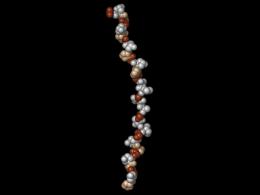Classic Venus statues. Venus de Milo (Aphrodite, Venus de Milo) de Milo in the Louvre
Venus de Milo. Louvre. Paris.
The vast majority of people know the Venus de Milo primarily as a statue without arms. And this, as many believe, is its main mystery. But in fact, there are much more mysteries and secrets associated with this statue.
1. The title of "Venus de Milo" is misleading
Venus - among the Romans, Aphrodite - among the Greeks.
It is widely believed that this statue depicts the Greek goddess of love and beauty. But the Greeks called this goddess Aphrodite, and Venus is the Roman name.
2. The statue was named after the place where it was discovered
Statue from the island of Milos.
On April 8, 1820, a farmer named Yorgos Kentrotas came across the statue in the ruins of an ancient city on the island of Milos.
3. The creation of the statue is attributed to Alexandros of Antioch
Masterpiece of Alexandros of Antioch.
Hellenistic period sculptor Alexandros is believed to have carved this stone masterpiece between 130 and 100 BC. The statue was originally found with a pedestal-slab on which it stood. There an inscription about the creator was discovered. Subsequently, the pedestal mysteriously disappeared.
4. The statue may not depict Venus
Amphitrite and Poseidon.
Some believe that the sculpture does not depict Aphrodite/Venus, but rather Amphitrite, a sea goddess who was especially revered on Milos. Still others even suggest that this is a statue of the goddess of victory Victoria. There is also debate about what the statue was originally holding. There are different versions that it could be a spear or a spinning wheel with threads. There is even a version that it was an apple, and the statue was Aphrodite, who was holding in her hands an award given to her by Paris as the most beautiful goddess.
5. The sculpture was presented to the King of France
Paris. Louvre. Venus de Milo.
Kentrotas originally found this statue with the French sailor Olivier Voutier. Having changed several owners while trying to remove it from the country, the statue eventually ended up with the French Ambassador in Istanbul, the Marquis de Riviere. It was the Marquis who presented Venus to the French King Louis XVIII, who, in turn, gave the statue to the Louvre, where it remains to this day.
6. The statue lost its arms due to the French
Statue without hands.
Kentrotas found fragments of the hands when he discovered the statue in ruins, but after they were reconstructed they were considered too "rough and ungraceful." Modern art historians believe that this does not mean at all that the hands did not belong to Venus; most likely they were damaged over the centuries. Both the arms and the original pedestal were lost when the statue was transported to Paris in 1820.
7. The original pedestal was purposefully removed
19th-century art historians decided that the Venus statue was the work of the Greek sculptor Praxiteles (it was very similar to his statues). This classified the statue as belonging to the classical era (480-323 BC), whose creations were valued much more than sculptures from the Hellenistic period. To support this version, even at the cost of misinformation, the pedestal was removed before the sculpture was presented to the king.
8. Venus de Milo - an object of national pride for the French
The Venus de Medici is a rival of the Venus de Milo.
During his conquests, Napoleon Bonaparte took one of the finest examples of Greek sculpture - the Venus de Medici statue - from Italy. In 1815, the French government returned this statue to Italy. And in 1820, France gladly took the opportunity to fill the empty space in the main French museum. The Venus de Milo became more popular than the Venus de Medici, which was also presented in the Louvre.
9. Renoir was not impressed by the sculpture
Renoir questioned the beauty of Venus.
Perhaps the most famous of the detractors of the Venus de Milo, the famous impressionist artist stated that the sculpture is very far from depicting female beauty.
10. Venus was hidden during World War II
One of the castles in the French province.
By the fall of 1939, with the threat of war looming over Paris, the Venus de Milo, along with several other priceless artifacts such as the sculpture of the Nike of Samothrace and works by Michelangelo, were removed from the Louvre to be stored in various castles in the French countryside.
11. Venus was robbed
Robbed Venus.
Venus is missing more than just hands. It was originally decorated with jewelry, including bracelets, earrings and a tiara. These decorations disappeared a long time ago, but there were holes in the marble for fastening.
12. Venus has lost its color
Although modern art lovers tend to think of Greek statues as white, marble sculptures were often painted in a variety of colors. However, no traces of the original painting remain today.
13. The statue is taller than most people
Venus is taller than the average person.
The height of the Venus de Milo is 2.02 m.
14. The sculpture can be a copy
Art historians note that the Venus de Milo bears a striking resemblance to Aphrodite or the Venus of Capua, which is a Roman copy of the original Greek statue. From the time of the creation of the Venus of Capua, at least 170 years passed before Alexandros created the Venus de Milo. Some art historians believe that both statues are actually copies of an older source.
15. Imperfection of sculpture as a source of inspiration
Perhaps the Venus de Milo looked like this.
The Missing Arms of the Venus de Milo is much more than the source of numerous lectures, discussions and essays by art critics. Their absence has also led to countless fantasies and theories as to how the hands might be positioned and what they might contain.
Venus de Milo
The sculpture is a type Aphrodite of Knidos(Venus pudica, Shy Venus): a goddess holding a fallen robe with her hand (the first sculpture of this type was sculpted by Praxiteles, c. 350 BC). Proportions - 86x69x93 with a height of 164cm
History of the find

Location where the statue was found
Her hands were lost after the discovery, during a conflict between the French, who wanted to take her to their country, and the Turks (owners of the island), who had the same intention.
Dumont-D'Urville immediately realized that the only way to disrupt the deal (and the statue had already been taken to the port to be sent to Istanbul) was to try to outbid Elena. Having learned how much the Turks paid for the find (and he paid literally pennies), Dumont-D'Urville, with the consent of the diplomat, offered an amount ten times that amount. And within a few minutes a crowd of Greek peasants, led by Elena’s former owner, rushed to the port. The Turks were just loading the statue onto the felucca. The peasants demanded that the Turk increase their payment. He of course refused. And then a battle began, in which the French royal fleet did not participate, but was present. As a result of the battle, the statue fell overboard. The epic of lifting her to the top began. Moreover, local battles did not stop, and until the last moment it was not clear who would get this masterpiece. In addition, the bay turned out to be deep and rocky. It is not surprising that when the statue was finally raised and recaptured from the Turks, it turned out that it had lost its arms. They were never found. To this day. There is a description of the statue made by Dumont-D'Urville, which explains why the peasants first called it Helen the Beautiful - from childhood they remembered how Paris gave an apple and then married Helen. But they forgot that the apple went to the goddess of love, Venus.
Classification and location
The statue was purchased in 1821 and is currently kept in a gallery specially prepared for it on the 1st floor of the Louvre. Code: LL 299 (Ma 399).
At first, the statue was attributed to the classical period (510-323 BC). But it turned out that with the statue they also brought a pedestal, on which it was written that Alexander the son of Menides, a citizen of Antioch on the Meander, made this statue. And it turned out that the statue dates back to the Hellenistic period (323-146 BC). The pedestal subsequently disappeared and has not yet been found.
Notes
see also
Links
Categories:
- Sculptures in alphabetical order
- Sculptures based on Greek mythology
- Sculptures from the Louvre collections
- Sculptures of Ancient Greece
- Sculptures from the 2nd century BC. e.
- Aphrodite
Wikimedia Foundation. 2010.
Synonyms: (Aphrodite from the island of Milos)- ancient Greek sculpture created approximately between 130 and 100 BC.History of creation
History of the find
Voutier tried to persuade the captain to immediately sail to Istanbul to obtain permission for export, but the captain refused and Voutier gave up on his find. But another naval officer, Jules Dumont-D'Urville, went to Istanbul and received permission. Upon his return, he discovered the statue on a Russian ship, the captain of which was paid by a Turkish official to transport the statue to Istanbul. After difficult negotiations with the islanders, Dumont-D'Urville finally achieved the ransom of the statue. Later, the Turkish authorities, enraged that such a valuable find had escaped them, ordered the most influential inhabitants of the island of Milos to be publicly flogged.
Her hands were lost after the discovery, during a conflict between the French, who wanted to take her to their country, and the Turks (owners of the island), who sought to prevent the statue from being taken outside the empire.
Classification and location
Initially, the statue was attributed to the classical period (510-323 BC); for some time the authorship was attributed to Praxiteles. But it turned out that with the statue they also brought a pedestal, on which it was written that Agesander (or Alexander, the inscription was illegible), son of Menidas, citizen of Antioch on the Meander, made this statue. The statue therefore dates back to the Hellenistic period. Subsequently, the pedestal disappeared and has not been found to date.
The statue was purchased in 1821 and is currently kept in a gallery specially prepared for it on the first floor of the Louvre. Code: LL 299 (Ma 399).
Write a review about the article "Venus de Milo"
Notes
see also
Links
- in the Louvre database (French)
| This is a preliminary article on art. You can help the project by adding to it. |
Excerpt characterizing the Venus de Milo
- Is it okay, your honor? - he said, turning questioningly to Tushin. “He got away from the company, your honor; I don’t know where. Trouble!Together with the soldier, an infantry officer with a bandaged cheek approached the fire and, turning to Tushin, asked him to order the tiny gun to be moved in order to transport the cart. Behind the company commander, two soldiers ran to the fire. They swore and fought desperately, pulling out some kind of boot from each other.
- Why, you picked it up! Look, he’s clever,” one shouted in a hoarse voice.
Then a thin, pale soldier approached with his neck tied with a bloody wrap and in an angry voice demanded water from the artillerymen.
- Well, should I die like a dog? - he said.
Tushin ordered to give him water. Then a cheerful soldier ran up, asking for a light in the infantry.
- A hot fire to the infantry! Stay happily, fellow countrymen, thank you for the light, we will pay you back with interest,” he said, carrying the reddened firebrand somewhere into the darkness.
Behind this soldier, four soldiers, carrying something heavy on their overcoats, walked past the fire. One of them tripped.
“Look, devils, they put firewood on the road,” he grumbled.
- It’s over, so why wear it? - said one of them.
- Well, you!
And they disappeared into the darkness with their burden.
- What? hurts? – Tushin asked Rostov in a whisper.
- Hurts.
- Your honor, to the general. They’re standing here in the hut,” said the fireworksman, approaching Tushin.
- Now, my dear.
Tushin stood up and, buttoning his overcoat and straightening himself, walked away from the fire...
Not far from the artillery fire, in the hut prepared for him, Prince Bagration sat at dinner, talking with some of the unit commanders who had gathered with him. There was an old man with half-closed eyes, greedily gnawing a mutton bone, and a twenty-two-year-old impeccable general, flushed from a glass of vodka and dinner, and a staff officer with a personalized ring, and Zherkov, looking at everyone restlessly, and Prince Andrei, pale, with pursed lips and feverishly shiny eyes.
In the hut there stood a taken French banner leaning in the corner, and the auditor with a naive face felt the fabric of the banner and, perplexed, shook his head, perhaps because he was really interested in the appearance of the banner, and perhaps because it was hard for him hungry to look at dinner for which he did not have enough utensils. In the next hut there was a French colonel captured by the dragoons. Our officers crowded around him, looking at him. Prince Bagration thanked individual commanders and asked about the details of the case and losses. The regimental commander, who introduced himself near Braunau, reported to the prince that as soon as the matter began, he retreated from the forest, gathered woodcutters and, letting them pass by him, with two battalions struck with bayonets and overthrew the French.
- As I saw, Your Excellency, that the first battalion was upset, I stood on the road and thought: “I’ll let these through and meet them with battle fire”; I did so.
The regimental commander wanted to do this so much, he regretted so much that he did not have time to do this, that it seemed to him that all this had actually happened. Perhaps it actually happened? Was it possible to make out in this confusion what was and what was not?
“And I must note, Your Excellency,” he continued, recalling Dolokhov’s conversation with Kutuzov and his last meeting with the demoted man, “that the private, demoted Dolokhov, captured a French officer before my eyes and especially distinguished himself.”
“Here I saw, Your Excellency, an attack by the Pavlogradians,” Zherkov intervened, looking around uneasily, who had not seen the hussars at all that day, but had only heard about them from an infantry officer. - They crushed two squares, your Excellency.
At Zherkov’s words, some smiled, as always expecting a joke from him; but, noticing that what he was saying also tended towards the glory of our weapons and the present day, they took on a serious expression, although many knew very well that what Zherkov said was a lie, based on nothing. Prince Bagration turned to the old colonel.
- Thank you all, gentlemen, all units acted heroically: infantry, cavalry and artillery. How are two guns left in the center? – he asked, looking for someone with his eyes. (Prince Bagration did not ask about the guns on the left flank; he already knew that all the guns had been abandoned there at the very beginning of the matter.) “I think I asked you,” he turned to the officer on duty at the headquarters.
Venus received its regional “surname” from the name of the island on which it was found in 1820 by a French sailor. Milos, today a Greek territory, was at that time under the rule of the Ottoman Empire.
History of Venus de Milo
The Frenchman, accompanied by a Greek guide, found a beautiful statue - generally well preserved, but divided in half. The Turkish authorities, after exhaustive bidding, finally allowed the statue to be removed from the island, but later, realizing how much value it had lost, they organized an exemplary punishment for the Greeks who participated in the search and transportation. In the process of the latter, the hands were lost. In France, Venus was presented to Louis XVIII and was soon transferred to the Louvre, where it remains to this day.
Field Marshal Gerd von Rundstedt in the Louvre. (wikipedia.org)
On the pedestal, which was found along with the sculpture and then lost, it is indicated that the statue was made by Alexander, son of Menidas, a citizen of Antioch on the Meander. And this happened around 130 BC.
The statue was sculpted in parts, which were then put together. A similar technique was popular in the Cyclades. Judging by the remaining mounting holes, Venus was wearing bracelets, earrings and a headband, and the marble was painted. For its time, the sculpture is unique with its graceful curve of the body and skillfully executed drapery of the falling fabric.
3D reconstruction of the statue. Source: wikipedia.org
It is generally accepted that the half-naked goddess personifies Aphrodite (in the Roman tradition - Venus), but the absence of hands in which she could hold the attributes that characterize her gives rise to numerous hypotheses.
Statue of Venus de Milo: versions
There is an assumption that Venus was holding an apple. There are hypotheses that this is the goddess of the sea, Amphitrite, who was extremely revered in Milos. She could be paired with someone, one of her hands leaning on the shoulder of the neighboring sculpture. She could hold a bow or an amphora - attributes of Artemis.
There is also a hypothesis that the sculpture was not a goddess, but a heteroa - one of those that was often depicted on vases.

Image of the statue of Praxiteles. (wikipedia.org)
For its beautiful eyes and enchanting curves, the sculpture is still considered the goddess of love and belongs to the so-called Cnidus type. Around 350 BC e. Praxiteles sculpted a naked goddess who held fallen clothes. The statue has not survived, but the image was reproduced by numerous followers in sculpture and painting.
Greek sculpture had a tremendous influence on subsequent eras. In many ways, the ideals of body beauty were first embodied in marble by ancient masters and, with minor variations, have survived to this day. The Hellenistic period, to which the Venus de Milo belongs, was a time of change: social institutions traditional to classical Greece became obsolete, and new ones emerged. Foundations and norms, worldviews, and attitudes toward art changed.
Aesthetics were formed under the influence of the cultures of those peoples who were part of the empire as it expanded. The influence of the East is becoming more and more noticeable with its attention to decor, details, sensuality and emotionality, which appears even in marble. The sculpture was no longer the embodiment of the static position of an ideal body, but demonstrated the passions that overwhelmed the heroes and represented genre multi-figure scenes, which were later used by painters.






